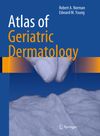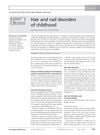Diagnosis Directs Treatment in Fungal Infections of the Skin
October 2015
in “
PubMed
”
TLDR Proper diagnosis is essential for effective treatment of skin fungal infections.
The document discussed the diagnosis and treatment of dermatophyte fungal infections, which were confined to the keratin layer of the epidermis and included genera such as Microsporum, Epidermophyton, and Trichophyton. These infections could be transmitted through human contact, soil, or animals and typically presented as erythematous, scaly eruptions. Diagnosis was crucial before treatment, particularly oral therapy, with microscopy and culture being the gold standard. T. rubrum was identified as the most common organism, affecting various body parts, including the hands, trunk, and groin. Tinea capitis, affecting the scalp, was characterized by patchy hair loss and could lead to a painful swelling known as a kerion, associated with alopecia.



